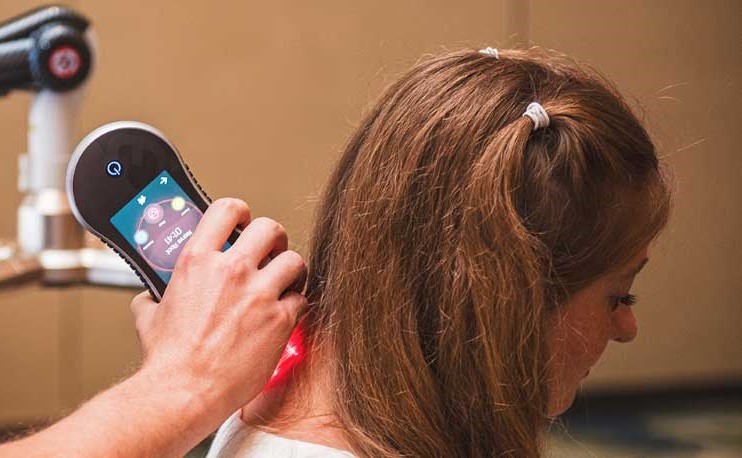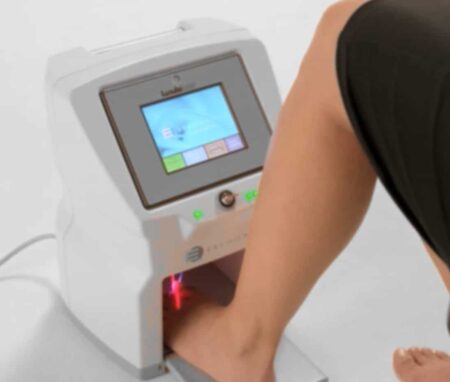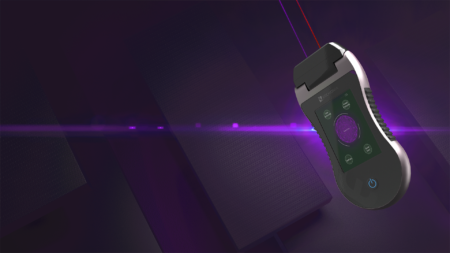Arthritis has historically been a challenging area for health professionals to manage worldwide. From the complex nature and disease process, to the various types of arthritis with their own unique features and clinical concerns. In some cases, the underlying mechanisms of arthritic pain have been poorly understood, making it difficult to effectively target the root causes of inflammation and pain.
Among the challenges and unknowns remains the very solid fact that arthritis can cause debilitating pain, dysfunction, mobility restrictions – and can severely affect a person’s quality of life, along with their mental health and wellbeing. With 3.9 million Australians currently living with arthritis, and a projected rise to 5.4 million by 2030, it is becoming crucial for health professionals to seek out more effective treatment modalities to help their patients manage their arthritis pain that goes beyond the standard NSAIDs, exercise recommendations, weight management, assistive devices, and lifestyle changes, among others.
Low level laser treatment (LLLT) is a therapy that began to be researched for its role in arthritic pain management as early as 1987, where it showed promising results in improving joint mobility and reducing pain in a small sample. Over the past 35 years, the body of evidence has grown insurmountably, leading to it being well-established in its pain-relieving properties while being completely non-invasive and carrying no risk for adverse effects. Paired with technological advancements over the past decade that has made LLLT more accessible, compact and user-friendly than ever before, LLLT is now being used by clinicians globally to significantly reduce arthritis-related pain and discomfort while improving mobility, function and quality of life. One of the leading devices in this field is called the EVRL Laser. Here’s what you should know about the laser, and how it’s being used to lead to life-changing patient outcomes.
EVRL Laser: Overview
EVRL is an innovative low-level laser that has been carefully contained within an easy-to-use, handheld device – enabling doctors, chiropractors, physiotherapists, podiatrists and various other health professionals to make it an simple, hassle-free and efficient part of their management process for patients with arthritis. It has an exceptional level of clinical confidence (level one studies), backed by both comprehensive clinical research as well as FDA market clearance (as well as clearance by ISO, CE and EIC).
The EVRL laser works by emitting low-level laser energy to the area over which it is directly applied, enabling the cells to use this energy in healing, pain-relieving, anti-inflammatory and reparative functions. Specifically, two different laser frequencies of 405nm and 635nm are emitted simultaneously by the EVRL laser during every treatment application, presenting as separate red and violet lights. It is the combination of these two frequencies and the way they work together that is one of the keys behind EVRL’s success – producing better results during clinical studies than when two red beams were paired together by other devices.
As the laser frequencies set by EVRL are ‘cold’, each treatment is painless and comfortable, allowing patients to relax throughout their treatment. Low-level laser has been studied across all age groups, and there is no associated pain or reported side effects, with the technology being very safe with no health risks. By working at the cellular level, EVRL enables your body to stimulate natural pathways in similar ways that drugs and medicines can – but without the complications, side effects or potential dangers.
What Makes EVRL Better Than NSAIDs or Corticosteroids For Arthritis?
While NSAIDs and corticosteroids are still commonly used in the management of arthritic pain, they aren’t suitable for everyone, and carry a risk of notable side effects – especially for our older population where the arthritis risk increases exponentially.
NSAIDs carry risks including:
- Gastrointestinal problems: NSAIDs can irritate the lining of the stomach and increase the risk of stomach ulcers, bleeding, and other digestive problems.
- Kidney problems: NSAIDs can reduce blood flow to the kidneys and may cause kidney damage or kidney failure, particularly in individuals with pre-existing kidney problems.
- Cardiovascular problems: NSAIDs can increase the risk of heart attack, stroke, and other cardiovascular events, particularly in individuals with pre-existing heart disease.
- Allergic reactions: some people may be allergic to NSAIDs and experience symptoms such as rash, hives, and difficulty breathing.
- Liver damage: in rare cases, NSAIDs can cause liver damage, particularly if used for long periods of time or at high doses.
- Interference with other medications: NSAIDs can interact with other medications, including blood thinners and certain antidepressants, increasing the risk of negative side effects.
Corticosteroids carry risks including:
- Increased risk of infection: corticosteroids can suppress the immune system and increase the risk of infections, particularly in individuals taking high doses or using the medication for a long time.
- Weight gain: corticosteroids can cause fluid retention and weight gain, particularly in the face, neck, and trunk.
- Mood changes: corticosteroids can cause mood changes, such as irritability, agitation, and depression, particularly in individuals taking high doses or using the medication for a long time.
- Osteoporosis: corticosteroids can increase the risk of bone loss and osteoporosis, particularly in postmenopausal women and individuals taking high doses or using the medication for a long time.
- Elevated blood sugar: corticosteroids can increase blood sugar levels and may cause or worsen diabetes, particularly in individuals with pre-existing diabetes or those taking high doses or using the medication for a long time.
- Adrenal suppression: corticosteroids can suppress the body’s natural production of corticosteroids and may cause adrenal insufficiency, particularly in individuals taking high doses or using the medication for a long time.
- Eye problems: corticosteroids can increase the risk of cataracts and glaucoma, particularly in individuals using the medication for a long time or applying it topically to the eye.
Which Areas Of The Body Can EVRL Be Used To Relieve Arthritic Pain?
The brilliance of EVRL for clinicians is that it can be used to help manage a wide range of types of arthritis – helping with both inflammation in cases of rheumatoid arthritis and gout, and helping with pain pathways and joint pain in cases of degeneration like from osteoarthritis across the entire body. The pain-relieving and anti-inflammatory properties of low-level lasers are cumulative, and have been proven across both early and late stages of inflammatory arthritides. Some of the results that practitioners considering the EVRL should be aware of:
- A 70% pain reduction with LLLT compared to placebo [1]
- Reduction in morning joint stiffness by 27.5 minutes [2]
- Improved flexibility and performance [3]
- Significant reductions in disability and pain, with pain reduction peaking during follow-ups 2-4 weeks after finishing the therapy program in the studies [4]
EVRL laser is currently being used to relieve arthritic pain:
- In the big toes and feet from gout
- In the hands and fingers from rheumatoid arthritis
- In the feet, toes and ankles from rheumatoid arthritis
- In the knees and hips from osteoarthritis
- In the shoulders and neck from osteoarthritis
- In the elbows and wrists from osteoarthritis
- Through the spine from osteoarthritis
EVRL In The Clinic
Aside from the significant patient benefits, EVRL also greatly benefits the practitioners who add this treatment into their clinics. You can expect:
- A product that is suitable for all your patients, regardless of their age, concurrent medical conditions, the medications they’re taking or the type of arthritis they have
- A product that’s non-invasive nature means that it’s a simple adjunct to appointments without any planning or preparation needed
- A product that’s extremely easy to use, with a training video provided that is only 18 minutes in length. No training days out of the office required
- No ongoing costs for equipment calibration and maintenance, supporting the profitability of your clinic
- EVRL is FDA cleared to treat various other problems including sports injuries and musculoskeletal pain, neuropathy, and more.
- High patient satisfaction with a 91% customer satisfaction rating
- Confidence that you’re getting the best – Erchonia, the developer of the EVRL laser have $5 million dollars invested in R&D at any time to ensure you’re getting the best devices at all times
- A great return on investment. The EVRL laser is able to be bundled as a treatment package, or as single treatments, both of which lead to clinics having a great annual return on investment on their devices.
- To be fully supported by Erchonia when it comes to clinical information provision, marketing efforts and pricing guide to solidify this treatment as a fantastic investment for your clinic.
- To grow your referral network by having an innovative treatment that is FDA cleared, to help with pain, inflammation and other problems.
EVRL Laser is currently available from RehaCare, Australia’s leading distributor of high-quality musculoskeletal and medical devices that are comprehensively screened to ensure you’re getting the best product on the market. See more about the laser including explainer videos, testimonials and FAQs here.
- [1]: https://pubmed.ncbi.nlm.nih.gov/10955339/
- [2]: https://bmjopen.bmj.com/content/9/10/e031142
- [3]: https://pubmed.ncbi.nlm.nih.gov/10955339/
- [4]: https://www.nature.com/articles/s41598-022-26553-9




